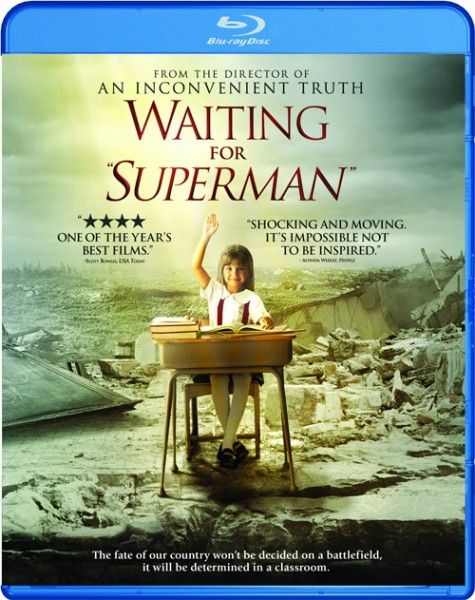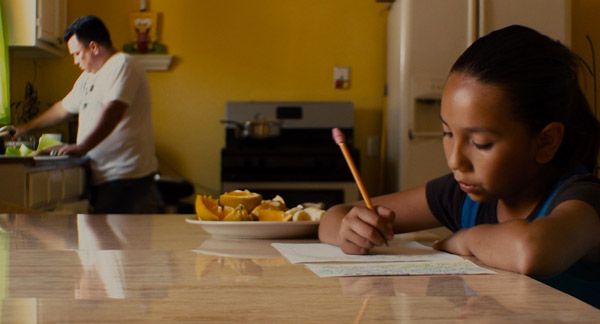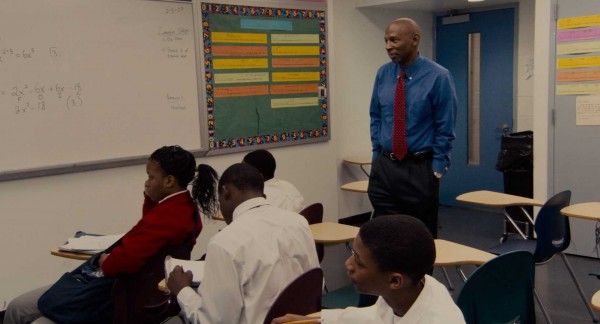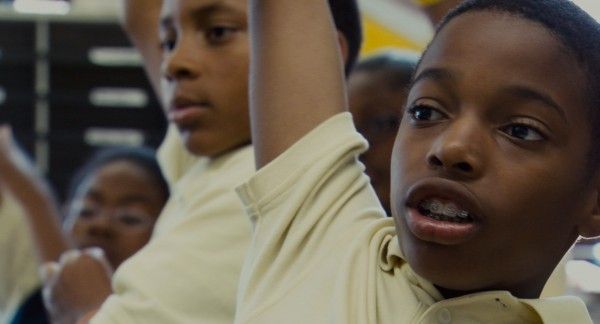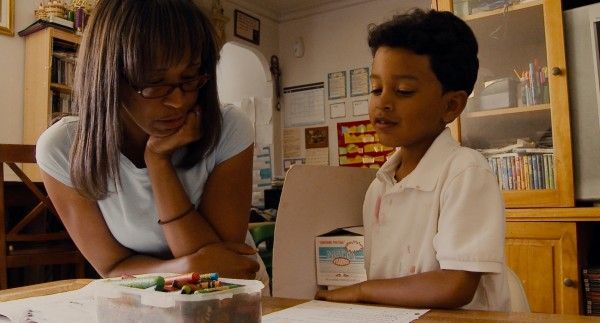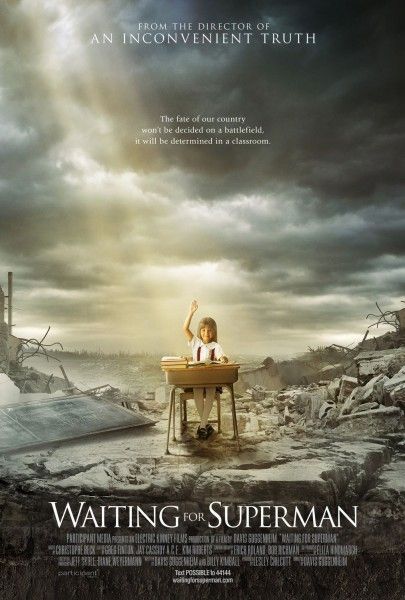A thorough documentary takes a journalistic look at an issue by investigating it from all possible angles, removing the emotional component from the discussion and using the gathered information to draw a logical conclusion. A popular and successful documentary heightens an emotional issue by emphasizing the plight of the downtrodden while demonizing the oppressors, all while making their point of view easily understandable to the masses. Waiting for Superman is a fantastic example of a documentary which attempts to be thorough while being successful and wildly engaging.
Of course, it helps that director and writer Davis Guggenheim has two other films under his belt (It Might Get Loud and An Inconvenient Truth) that join Waiting for Superman on the list of 100 highest-grossing documentaries of all time. Rather than solve global warming, this time around Guggenheim tries to tackle an equally frustrating issue: educational reform in America. Hit the jump to read my Blu-ray review.
The title of Waiting for Superman comes by way of an anecdote from educational reformer Geoffrey Canada. He relates that the saddest day of his childhood growing up in Harlem was the day his mother told him Superman wasn’t real. He began to cry, not at the dispelling of the myth, but at the fact that no one was going to show up who was strong enough to put a stop to everything that was wrong with his neighborhood. Little did Canada know at the time, but he has since become “Superman” to the kids in his old neighborhood.
The film opens up with Anthony, an inner city kid living in Washington, D.C. who lost his father to drugs and has been raised by his grandmother. Anthony wants nothing more than to go to a good school and get a solid education. This simple scene sets up the reoccurring argument at the core of Waiting for “Superman”: our children can and want to learn, but the system fails many of them.
While Guggenheim himself provides the voiceover throughout, he introduces clips from a similar documentary about teachers he filmed ten years ago (The First Year). His present-day self drives past his local public schools to drop off his own kids at a private school. He admits that not everyone is so fortunate as to have the choice. And so begins the tracking of various students in America and their struggles in the education system. There is the aforementioned Anthony, as well as Daisy from Los Angeles, Francisco from the Bronx and Bianca from Harlem. To show that not only inner city kids have school systems that need to be reformed, the film also follows Emily and her family, who live in Red Wood City, California, a suburb in Silicon Valley.
Waiting for Superman focuses on each of these kids and their families as they attempt to seek admission into chartering or preparatory schools. The problem is, there are far too few spaces for all of the applicants, and so a state-mandated lottery must be held for admission. The film slowly builds momentum towards the fateful moment where the children learn the outcome of their educational future. More on that in a moment.
Aside from the emotional involvement with the students and their families, Waiting for “Superman” brings the plight of the educational system into the spotlight through various interviews, news clips and statistics. The speakers are passionate and engaging, especially the above-mentioned Geoffrey Canada (who is the type of teacher that every student should have at least once in their educational experience). Clips from past Presidential promises to reform education roll across the screen as a parade of failures. My personal favorite is the George W. Bush quote, “As yesterday’s positive report card shows, childrens (sic) do learn.”
The statistics are shown in an animated manner (literally), as cartoon charts and figures accompany the narration. Some that still stick with me are the fact that America has more than doubled the amount of money spent per student since 1971, while performance in math and reading has flat lined (adjusted for inflation). The worst reading scores reside in our nation’s capital, with only 12% reaching proficiency level. A statistic that elicited some self-deprecating laughter was a poll that placed America’s best students at 23 out of 29 developed countries, but #1 in perceived performance and confidence.
Guggenheim stresses the importance of teachers throughout Waiting for “Superman,” particularly the teachers who are actually good at their jobs. The film has drawn criticism that it demonizes teachers and union leaders, but it’s really the stagnant system that is the focus here. Issues of tenure and teachers’ rights preclude discussing changes to the system, even when those changes could involve higher pay for the teachers themselves. The point that Guggenheim stresses is that while adults in the education system continue to seek what works best for them, the ones who are left to suffer are the children.
While each of the kids in this documentary exist to make you emotionally invested, they also represent the faceless masses of students across this country who are in the same position. The last few scenes of Waiting for “Superman” show the various families sitting in cafeterias, waiting for the lottery drawing. Of course, we are pulling for each of them to get accepted as we watch the available spaces slowly dwindle.
For students like Emily, who got into her preparatory school, and Anthony from D.C., who at first was placed on a waiting list, but was later called to confirm his admission to a private school, some stories have a happy ending. But for every student admitted, there are many others who are not so lucky. Daisy, Francisco and Bianca are among those who must continue to struggle in sub-par schools. Maybe by the time their kids are in school, we’ll have an educational system in America that doesn’t need to resort to the drawing of lottery numbers to determine just how much they can learn.
Extras:
One of the coolest things in the Blu-ray for Waiting for “Superman” was the inclusion of a $25 gift card to DonorsChoose.org. The film does a great job at trying to keep people engaged and proactive even after they finish watching. This gift card dares you to put their money where their mouth is.
There is, of course, the standard commentary track with director Davis Guggenheim and producer Lesley Chilcott. They provide their own insight into each scene and reflect on their experiences filming the movie and getting to know their subjects.
“Changing the Odds” is a bright spot after the somewhat bleak outlook portrayed by the documentary. It briefly sums up the main themes of Waiting for “Superman” while showing examples of how the education reform is taking place as we speak. From changing how teachers are trained to involving parents more in their child’s education, the short segment feels like a promotional, yet hopeful, advertisement.
There is also an updates section about specifics that have changed in the educational system since the documentary was filmed. The two short paragraphs touch on points that were briefly covered in the film.
“A Conversation with Davis Guggenheim” is actually just an animated short about how poor a student he was growing up. Guggenheim focuses on the one teacher that he remembers and that was responsible for making him feel like he had something to say. He stresses the need for great teachers and honors those who have made a difference in your life.
“The Future is in Our Classroom” is another provocative advertisement full of statistics and hopeful rhetoric. It stresses how changing the early stages of education can have a cascading effect throughout an individual’s life, effectively impacting our society as a whole.
“The Making of ‘Shine’” is a behind-the-scenes look at John Legend’s song “Shine” which was created and recorded for this documentary. It shows Legend revisiting the small town in Ohio he grew up in, his reflections on his life since and just how seriously he took this opportunity. It’s interesting to watch his creative process of developing the song, while he compares his home-schooling to the good teachers that he came across once he attended high school, which is one of the “Dropout Factories” mentioned in the documentary.
In the “Deleted Scenes” we come across a duo in New Orleans who opened a new school to educate students displaced by hurricane Katrina. There is also extended footage on Steve Baar, who successfully achieved a “hostile takeover” of problematic Locke High School in Los Angeles. Another scene pays a visit to Pittsburgh where the problems of Los Angeles and New York are eerily similar. Finally, the last scene shows how contrasting public vs. private schools can be, as two brothers in the same family attend two different schools.
No matter if you’re a student, teacher or somewhere in between, I’d suggest checking out Waiting for “Superman” and getting involved as soon as you finish watching, even if it’s just to use the DonorsChoose.org gift card.


